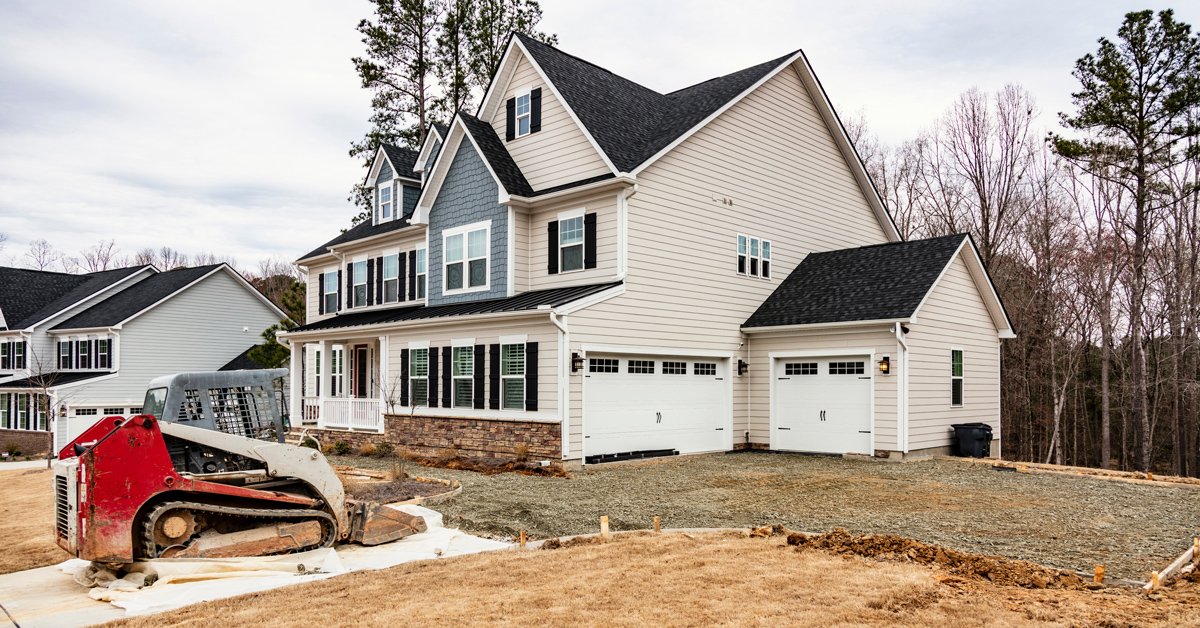
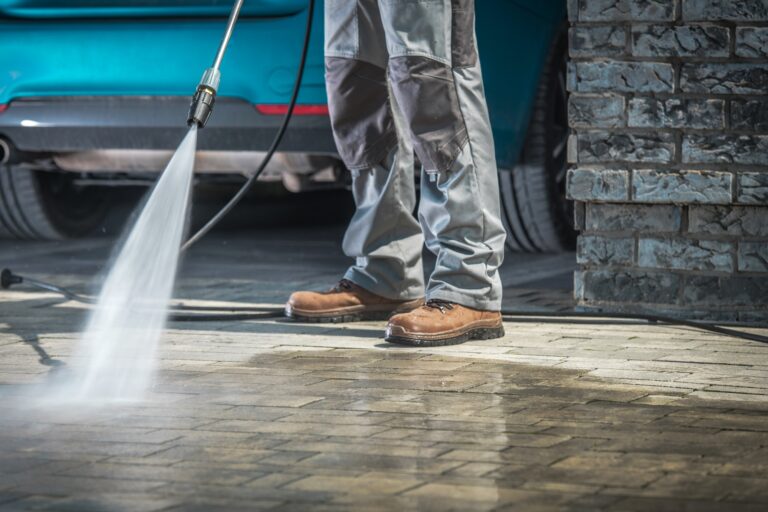
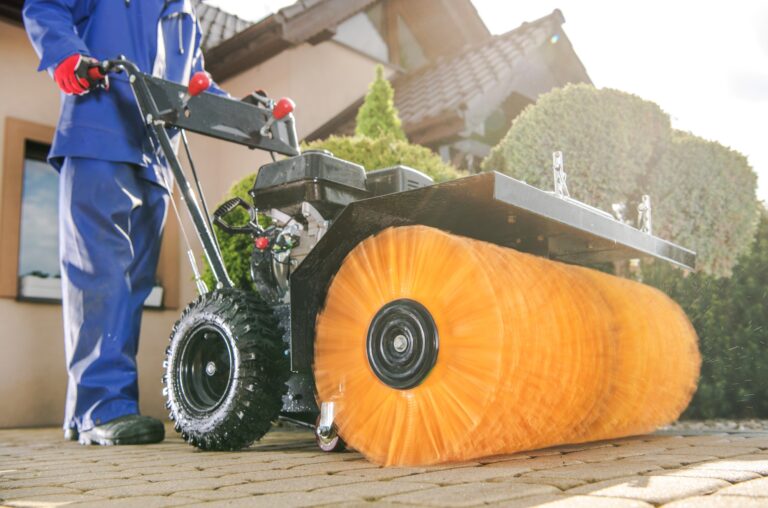
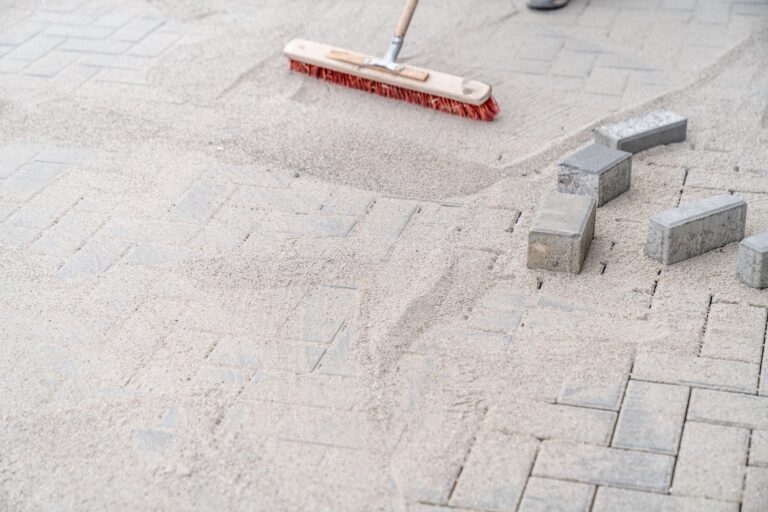
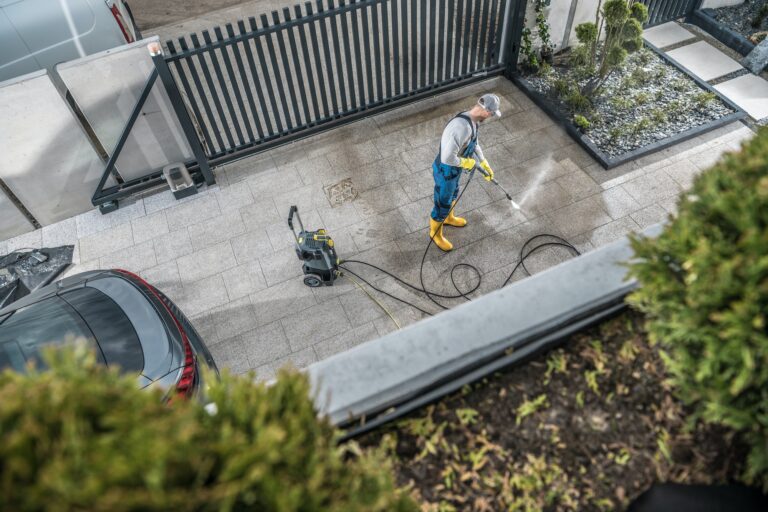
Welcome to our comprehensive guide designed for homeowners who seek practical advice on maintaining their driveways. A well-maintained driveway not only enhances the curb appeal of your home but also extends its lifespan, saving you from costly repairs. In this guide, we delve into essential tips and strategies that cover everything from regular cleaning to addressing common wear and tear. Whether you have a concrete, asphalt, or paver driveway, our expert advice will help you keep it in top-notch condition throughout the year. Let's dive into the world of effective driveway maintenance!
Regular cleaning involves sweeping debris and hosing down the driveway. For tougher stains, use a mild detergent or a specialized driveway cleaner with a push broom. Power washing can also be an effective method for deeper cleaning, but it requires some considerations based on your driveway type. Rinse thoroughly after cleaning.
Power washing can efficiently remove dirt, grime, and stains. However, it can also be harsh on certain surfaces. For concrete and pavers, it’s usually safe but always use a lower pressure setting. Stamped concrete, aggregate, and brick driveways require more care as high pressure can damage the surface or dislodge the material. Always test in a small, inconspicuous area first.
For an eco-friendly option, mix a solution of water with mild dish soap or vinegar. Commercially, brands like Simple Green and Krud Kutter offer environmentally safe driveway cleaners. They are effective for general cleaning and can be used in power washers or applied manually.
Concrete driveways are robust and can handle most cleaners, but avoid acidic solutions. Stamped concrete requires gentler cleaning methods to preserve the color and pattern. Aggregate driveways should be cleaned gently to avoid dislodging the stones. For pavers and bricks, use a mild solution to avoid fading and protect the sand in the joints.
For oil spills, start by absorbing as much oil as possible with cat litter or a commercial absorbent. Then, use a degreaser or a mixture of baking soda and laundry detergent to treat the stain. Scrub the area with a brush and rinse thoroughly. Repeat if necessary.
Regular cleaning, including proper stain removal and occasional power washing, prevents buildup that can damage the driveway's surface over time. This routine maintenance keeps it looking new, can prevent costly repairs, and prolongs the life of your driveway.
Expansion joints play a crucial role in preventing cracks by absorbing movement in the concrete. Over time, these joints can age and deteriorate, especially if they are filled with wood. Neglecting aging joints can lead to significant problems, such as sinking concrete sections. It's recommended to remove old wood fillers and seal the expansion joints with a self-leveling caulk. This prevents water infiltration and structural damage.
There are numerous how-to videos on YouTube that guide you through this process. However, if the task seems daunting, hiring a contractor is advisable for best results.
Small cracks in your driveway can expand over time, leading to more significant damage. Regularly inspect your driveway and fill any small cracks with appropriate concrete crack fillers. This preventive maintenance can save you from costly repairs in the long run.
Sinking driveway slabs can be a sign of underlying issues such as soil erosion or poor compaction. Stay vigilant and address these issues promptly. In some cases, slabjacking (raising sunken concrete slabs by pumping a grout mixture under them) or even replacing sections of the driveway might be necessary. Consulting with a professional can help you determine the best course of action.
Regular cleaning, along with the maintenance of expansion joints and addressing small cracks and sinking slabs, is crucial. This proactive approach not only maintains the aesthetic appeal of your driveway but also extends its lifespan, ensuring it remains functional and safe for years to come.
This enhanced section provides a thorough overview of key maintenance tasks that areSealcoating is more than just a cosmetic update; it's a vital part of driveway maintenance. Here are some key benefits:
Timing is crucial for sealcoating. Here are the ideal conditions and timings for applying sealcoat:
Having the right tools and materials is essential for a successful sealcoating job. Here's what you'll need:
Before making a decision, we highly recommend reviewing customer feedback and visiting the manufacturers' websites for more detailed product information. A little research allows you to compare aspects like product ratings, prices, application methods, and warranty terms. To get you started, here are a few hand-picked products that are worth checking out:
Follow these steps to ensure a thorough and effective sealcoating job:
Good drainage is crucial to preserve the integrity of your driveway. Ensure that water drains off effectively to prevent pooling, erosion, and potential freeze-thaw damage. Consider solutions like:
Regularly inspect your driveway, especially after heavy rainfall, for any signs of standing water. Pooling water can lead to various issues, including:
If you notice persistent drainage issues, it's advisable to consult a professional for an assessment and tailored solutions.
-term parking needs.Managing icy driveways and walkways is important for safety, but some methods can be harmful to your driveway:
Granular fertilizers can leave unsightly stains on driveways. To protect your driveway:
The edges of your driveway are particularly vulnerable to wear and damage. Strengthen them with:
Prevent weeds from damaging your driveway by:
Understanding and adhering to your driveway's weight capacity is crucial to prevent damage, especially for asphalt or paver driveways. Manage heavy vehicle parking by:
Your driveway is more than just a path to your garage; it's a vital aspect of your home's curb appeal and functionality. Proper maintenance is key to ensuring its longevity and aesthetic appeal. By following the tips outlined in this guide, you can protect your investment and keep your driveway in top condition for years to come.
Remember, regular cleaning and sealcoating are foundational to preserving your driveway’s surface. Addressing issues like proper drainage, avoiding harmful deicing methods, and protecting against physical and chemical damage will save you from costly repairs in the long run. Additionally, understanding the specific needs of your driveway type, whether it's asphalt, concrete, or pavers, is crucial for targeted care and maintenance.
In conclusion, a well-maintained driveway not only enhances the beauty of your property but also adds value and safety. For expert assistance and tailored solutions for your driveway, feel free to visit our driveway services page. With the right approach and a bit of professional help, your driveway can remain a functional and attractive aspect of your home for many years to come.
© 2022 Nova Construction Pro